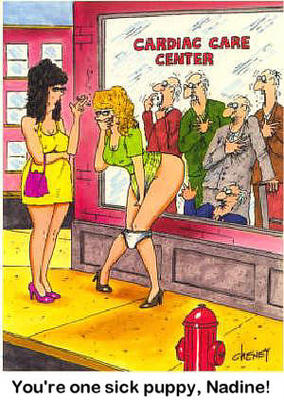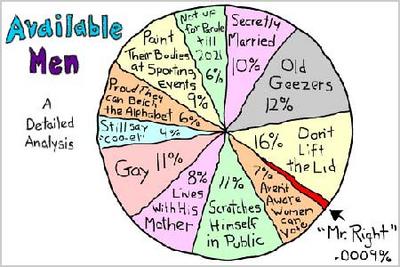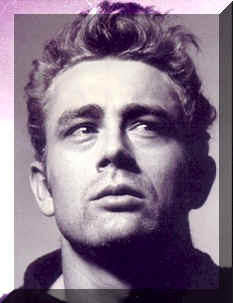Impotence
Impotence or erectile dysfunction affects 10-15 percent of all males and can be emotionally and psychologically disabling for men and their partners. In 80% of erectile dysfunction cases, physical factors such as drugs, blood flow abnormalities, nerve impulse abnormalities or hormonal abnormalities are the major causes. Psychological factors account for the remaining cases and may be attributed to stress, performance anxiety and misinformation about sexuality. Impotency is defined as An inability to get or maintain an erection, a potential side effect of treatments, e.g., lack of testosterone or damage to the cavernous nerves. Impotence or erectile dysfunction is the inability to achieve an erection, and/or dissatisfaction with the size, rigidity, and/or duration of erections. Erectile dysfunction affects millions of men. Although in the past it was commonly believed to be due to psychological problems, it is now known that 80 to 90 percent of impotence is caused by physical problems, usually related to the blood supply of the penis. Many advances have occurred in both diagnosis and treatment of erectile dysfunction.
ORGANIC IMPOTENCE
Organic impotence involves the penile arteries, veins, or both, and is the most common cause of impotence, especially in older men. When the problem is arterial, it is usually caused by arteriosclerosis, or hardening of the arteries, although trauma to the arteries may be the cause. The controllable risk factors for arteriosclerosis - being overweight, lack of exercise, high cholesterol, high blood pressure,
and cigarette smoking - can cause erectile failure often before progressing to affect the heart.
Many experts believe that when veins are the cause, a venous leak or "cavernosal failure" is the most common vascular problem.
Read more
Saturday, August 20, 2005
Friday, August 19, 2005
How to flirt, advice for woomen .....




This book, by author Joyce Jillson, is slightly dated. However, it still contains some good worthwhile ideas.
and pleeezzzzz dont never ever do wat notty Nadine does
Here are Ms. Jillson's three biggest tips on flirting:
Be friendly.
Don't let past rejections cloud your judgement or make you paranoid about an interaction going on right now (that's fair to neither of you).
Be prepared, both physically and emotionally.
This means looking your best as often as you can (people do meet in the oddest places...), and not dragging past or present personal troubles into a new interaction.
Here are Ms. Jillson's tips for "being popular":
"Be the bearer of good news"
Be a good listener
Go out of your way to meet new people
Pick up the telephone
Learn when not to say anything (i.e. perhaps cut back on the malicious gossip)
Other ideas she mentioned included "being playful yet persistent," showing vulnerabilities, flirting with no expectation of reward (i.e. just for fun, without a win/lose mentality), learning to dance, and contributing and/or appreciating good humor.
Ms. Jillson's "Ways to be a Great Flirt":
Use flattery
Say "Hello" with energy
Shake hands (depending on circumstances)
Make immediate, direct eye contact
Repeat the person's name
Ask "no one ever asked me that before!" questions
Ask for your new friend's life story
Have something to say by keeping up-to-date
Play with a piece of clothing (i.e. dangling your shoe, playing with an earring, stirring a drink, adjusting your hair, etc.)
Whisper
"Help someone get out of an old routine, and into a new one" (i.e. introduce them to some new activity or form of art or whatever)
"Leave them wanting more"
"Create and use nicknames"
"Drop Names" (i.e. show your connections to other people in your flirting partner's community)
"Wear, bring, or carry something unusual"
Limit the amount of time you flirt (to take the pressure off yourself if you haven't yet gotten to the point where flirting is just fun)
Set a numerical goal (i.e. "I will flirt with four people tonight, for my own good...")
Ms. Jillson's "5 Don'ts of Flirting":
Don't depend on others to make things happen
Don't tease (i.e. offering more than you intend to give...i.e. cock tease)
Don't cling
Don't dwell on your performance
Don't fidget
She also recommends, when appropriate, (1) subtly mimicing the other person's gestures and (2) smiling.
Appropriate use of touch was discussed at length (psychological studies show that casual touching during a friendly conversation causes people to remember the conversation more fondly after the fact).
Ms. Jillson mentioned brushing lint off someone's jacket, touching someone's hand as punctuation to making a point in the conversation, etc. "Accidental touch" (i.e. reaching for the saltshaker at the same time) was also mentioned favorably.
Ms. Jillson also had some gender-role specific advice.
Here are a few examples: "Women are less likely to engage in conversation with a man sitting by himself if he is smoking; the [male] flirt who can sit still and do nothing - neither drink, smoke, nor fidget - is most likely to find someone cozying up to him" and "For women, hair is one of the great flirting props; playing with hair, not combing it, but pushing it, shaking it, twisting it are very sexy come-ons" and "As for makeup, women should chuck most of it (with the possible exception of mascara)."
Here's what Ms. Jillson has to say about eye contact: "While staring or holding a gaze a second longer than usual will succeed in attracting notice, so will other subtle and more tasteful eye contact; try this: Throw a glance to a person, and then, as soon as your flirting partner turns to meet your gaze, immediately lower your eyes. This is very effective for both men and women." She also says, "Another technique that successful male flirts use is the darting eye. Women have less luck with this because it is a bit aggressive and somehow has masculine connotations. Take a quick look at a woman once; then return your eyes to their normal position; take a second look, held much longer; and then a third look where you turn your head in her direction but do not direct your eyes at her. The third move makes you appear less intrusive, but still confronts her in a manageable way."
[By the way, I'm feeling the need to point out that this book was largely written from a mainstream het perspective. The author didn't comment on how any of these gender-role specific things tend to be different between same-sex male or female couples. Also, I have to say that flirting styles can sometimes differ depending on what community you're in; I've noticed in the BDSM community, for example, that flirting tends to be much more direct and verbal (probably because play would have to be verbally negotiated anyway), and that it's much more acceptable if not downright encouraged for women to use the sort of eye contact that is described as "aggressive" above.]
With regard to hands, Ms. Jillson recommends rhythmic, repetitive motions such as rubbing your keys or playing with some other item (motions which she describes as soothing and alluring). She also claims that the most flirtatious part of the hand is the inner wrist, and that "any movements where you inadvertently reveal the inner wrist to your flirting partner can be disarming" [this probabaly isn't as critical as what you do with your eyes and the rest of your body language, though]. Crossing arms in front of you implies unapproachability: "in flirting, think openness."
With regard to legs, Ms. Jillson has the following advice: "Crossed legs or ankles can be flirtatious on women, if not done in a clenched manner. Men should stick with crossed ankles. However, both men and women should cross their legs in the direction of the person they are flirting with or trying to flirt with. Undoing and crossing your legs or ankles in this position, sitting with your legs uncrossed in-between, carries an excellent flirting message and a very sexual one [probably moreso when done by women than men]."
[What I've seen of male-male cruising is that many of these gestures are simplified and more overtly sexual: putting one's thumbs in the pockets of one's jeans such that the hands point towards the genitals is common, as is the classic "cruising glance" - looking in the eyes, looking down towards the genitals, and then back to the eyes.]
Other props Ms. Jillson mentions are sunglasses (which can be played with and used to cover or uncover the eyes, and which allow "browsing" a room without being too obvious about it) and flowers (when brought by men to women; apparently they don't work as well when brought by women to men).
At cocktail parties and such, often one of the hosts will introduce new people to other people at the party. When being introduced, Ms. Jillson's advice is to "always put out your hand and always say the person's name and always ask a question." The conversation needs to get started somehow, and unless something more substantial appears than the handshake the introduction is just going to sit there. If you forget someone's name, take this as an opportunity to talk to them again just before you leave.
Ms. Jillson strongly discourages the use of "pick up lines" or other pet phrases to start conversations; they almost never seem to come off well. Also, questions which have "yes/no" answers tend not to be the best conversation openers; questions which begin with "I feel," "I think," "I wonder," etc. are better.
Ms. Jillson's tips for flirting at parties are:
When you first get there, grab some food or a drink and notice what seems to be going on socially, what the dynamic seems to be, etc. The people who seem lost will be the easiest folk to successfully flirt with.
Assume that everyone is socially nervous; cut them some slack if things initially seem awkward, and look for ways you can make people more comfortable. Ms. Jillson's tips for creating a flirtatious and cozy environment at home are:
Have a cozy place to sit (those L-shaped couches are best).
Keep the temperature on the warm side.
Keep the place homey and not too sterile (silly books, knicknacks, games, etc. tend to help).
Be able to adjust the lighting (dimmer switches are nice, and candles are probably the most romantic way to illuminate the room).
Clear out your medicine cabinet: keeping old bottles of prescription medications for maladies you no longer have invites idle (and often incorrect) speculation. Well, that's all. Have fun!
http://www.amazon.com/exec/obidos/ASIN/067162752X/ref=nosim/societyforhumans/104-3625863-8430339
Copyright © Society for Human Sexuality. All rights reserved.
Tuesday, August 09, 2005
i wish ....

i wish i were dat hoss
but God forbid!
not the lady
http://gomeanimalfarm.blogspot.com/2005/08/saby-has-been-buggin-me-about-my-j.html#comments
Subscribe to:
Posts (Atom)




